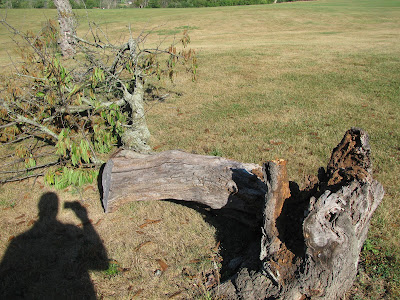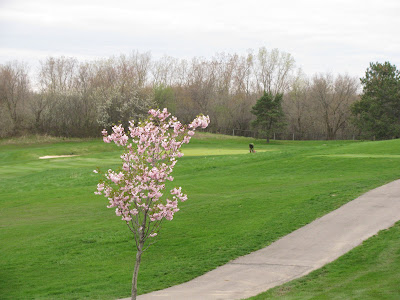Although many Americans enjoy working in their yards and maintaining an attractive landscape, they may not realize the tangible benefits of their efforts. These same benefits are available on the golf course where the combination of mowed turf, trees and natural areas provides a diverse environment for people and wildlife. Preserving these green spaces improves the environmental quality of the entire community.
As the game of golf has become more popular, people have become interested in how golf affects land resources and the environment. Many organizations in golf are actively answering these questions. In the past several years, the United States Golf Association (USGA) has supported more than 90 university studies and research projects to evaluate the relationship between golf and the environment.
This document highlights the benefits of turf, trees and natural areas as commonly found on golf courses. The information presented about these benefits is supported by factual, unbiased university research. Further information about any specific benefit - and the research from which it was drawn - can be provided by the USGA.
The golf course ecosystem:
- Provides wildlife habitat
- Protects topsoil from water and wind erosion
- Improves community aesthetics
- Absorbs and filters rain
- Improves health and reduces stress for more than 24.5 million golfers
- Improves air quality
- Captures and cleanses runoff in urban areas
- Discourages pests (e.g. ticks and mosquitoes)
- Restores damaged land areas (e.g. former landfill or mining sites)
- Makes substantial contributions to the community's economy

More than 70 percent of most golf courses are rough and non-play areas including natural grasses, trees and shrubs. Combined with the open areas of fairways and greens, the golf course is an attractive wildlife habitat. The USGA and the Audubon Society of New York State have developed the Audubon Cooperative Sanctuary Program for Golf Courses. This program enhances wildlife habitat on and around golf courses. From osprey to deer, an amazing number of species are making golf courses their home.

Our nation's topsoil is not a renewable resource. Wind and water may erode the topsoil into rivers, lakes and oceans. Once gone, it cannot be replaced in our lifetimes. Turf controls erosion by capturing and slowing fast-flowing water from storms.
How does turf stop erosion? Turf has a dense system of roots and shoots. Its normal growth patterns create organic matter. Together, the dense shoot and root growth slow surface water runoff. For example, during most rainstorms, very little soil is lost from areas covered by well maintained turf. However, there is a considerable loss of soil from bare ground and cropland. Even during extremely intense rainstorms (three inches per hour), studies show that turf holds up to 20 times more soil than traditionally-farmed cropland.

Turf not only keeps things cooler on a hot day; it also reduces noise pollution. Turf also reduces the glare of bright sunlight more than pavement or buildings. Plus, the community gains beauty and function when areas damaged by mining or landfills are reclaimed by professionally designed, constructed and maintained golf courses.

Rain is an important source of clean groundwater - which supplies much of our drinking water. Yet, during severe storms, water may run into streams and lakes, where it can't move through the soil to reach the groundwater.
Turf easily absorbs and filters runoff water during and after storms. Turf absorbs water because its growth habitat creates many tiny spaces that trap and hold moisture. In addition, well maintained turf encourages as many as 300 earthworms per square yard. The tiny tunnels the earthworms provide create even more places for the water to go. As water soaks into the grass and the soil below, it is filtered and cleansed. This process is so effective that many golf courses have become water recycling sites for their communities, using treated wastewater for irrigation.

Many types of turf were developed specifically for golf courses and other recreational uses. Golf provides over 24.5 million Americans the opportunity to exercise outdoors.
In research studies, participants lowered their cholesterol levels by walking the course when they played. An average 9-hole course covers about two miles and an 18-hole course about four miles.
In addition to benefits from exercise, research has shown that looking at a pleasant outdoor view can be healthy. In one study, hospital patients recovered faster when they had a view of turf, trees and open spaces. In another study, employees of businesses with well-designed landscaping and well-maintained turf had a more positive job attitude.

It's cooler in August in the park or in the country than on city streets. This cooler temperature is due to more than the shade. The grass itself can reduce the temperature. Synthetic turf can be twice as hot as green, growing turf - and asphalt is hotter still. Around urban areas, these green areas of grass and trees can actually reduce the energy needed for air conditioning.
Turf also improves the air we breathe. The turf growth process takes carbon dioxide from the air and releases the oxygen we need. A landscape of turf, trees, and shrubs about 2,000 square feet in size generates enough oxygen for one person for one year. Some studies have shown that certain types of turf can even absorb carbon monoxide. This is especially beneficial near roads where carbon monoxide is most concentrated.

In urban areas, the water collecting in parking lots, streets and vacant lots can be full of pollutants. Turf areas provide a good growing environment for many microorganisms. These microorganisms, in turf, help cleanse water by digesting the pollutants in the trapped water and speeding up their normal breakdown.

Dense, well-maintained turf helps reduce the weeds and pollen that aggravate allergy sufferers. When turf is mowed regularly, it seldom produces flowers that release pollen.
Closely mowed turf also discourages pests like mosquitoes, ticks and chiggers. Controlling ticks helps reduce the threat of Lyme Disease.

Turf is an excellent choice to restore areas damaged by landfills or mining operations. Turf has a very dense root system that holds the soil and rainwater, reducing erosion. As turf grows, it adds organic matter to the soil. This allows it to absorb even more water and hold it.
Many communities have found that a golf course is an excellent way to restore damaged areas. Beautiful golf courses exist today where abandoned quarries, strip mines and landfills once stood. Golf courses combine the benefits of turf with the beauty of landscaping. The result is a total reclamation of land for the community.

Golf has grown in popularity. It now appeals to a broader range of people than ever before. United States golf course facilities impact the economy at an estimated $18 billion each year. Today, more than 24.5 million men, women and youth spend 2.4 billion hours outside, playing one of the 14,500-plus golf courses. The USGA is working to make golf accessible everyone. Over 78 percent of the rounds played are on public golf courses.
 For more information, contact the USGA Green Section:
For more information, contact the USGA Green Section:
The United States Golf Association Golf House
P.O. Box 708
Far Hills, NJ 07931-0708
(908) 234-2300









































